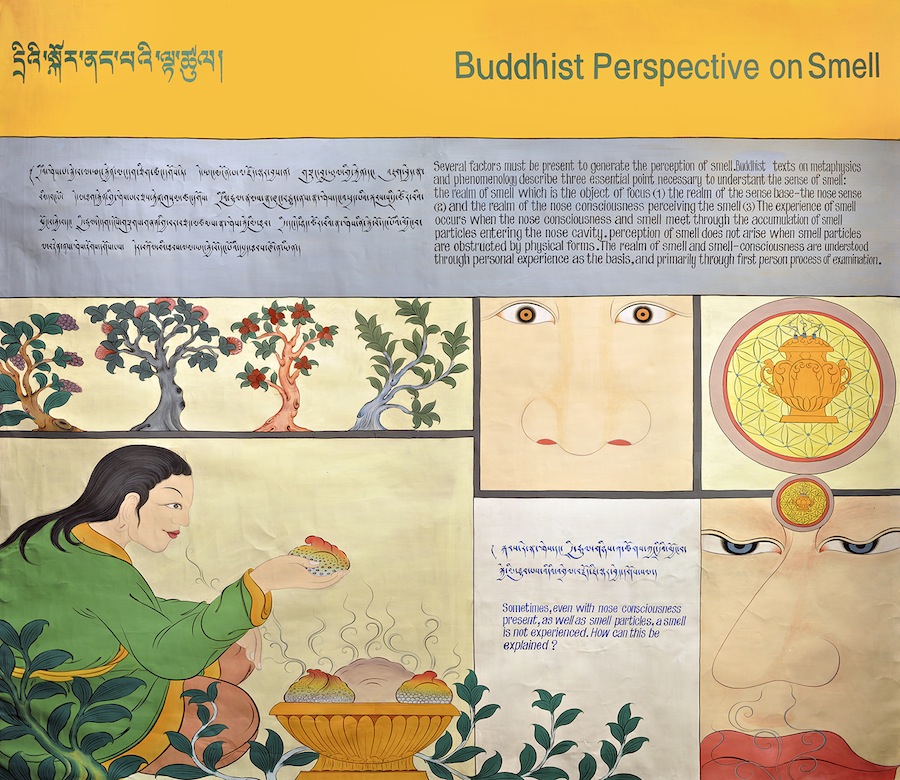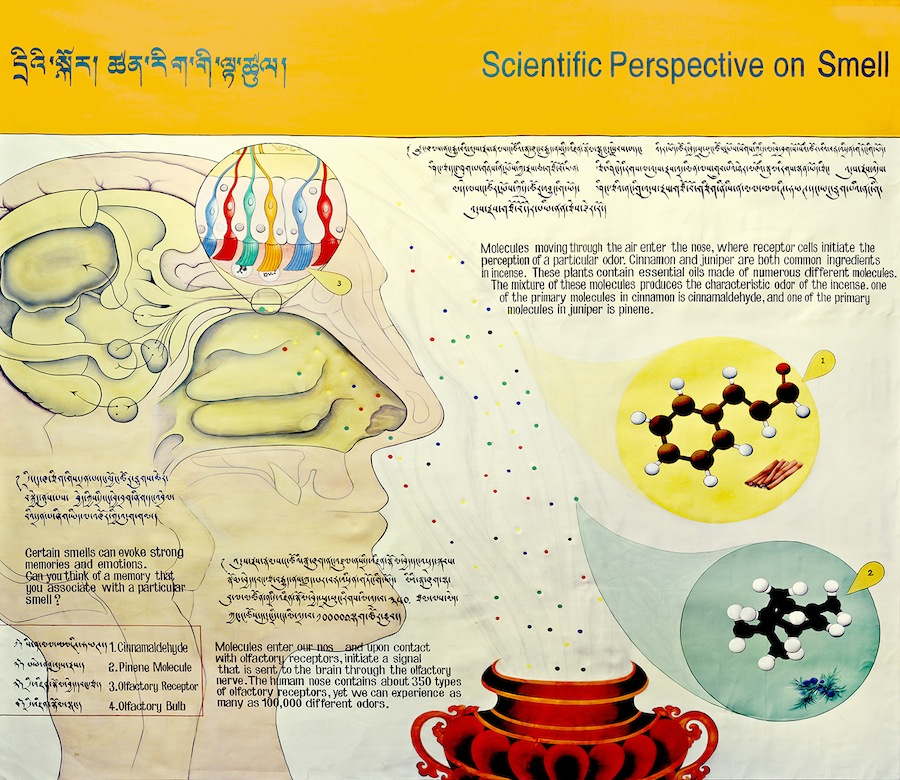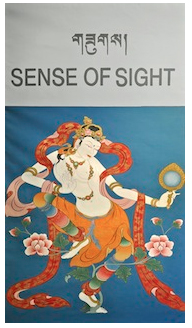Buddhist Perspective

Several factors must be present to generate the perception of smell. Buddhist texts on metaphysics and phenomenology describe three essential points necessary to understand the sense of smell: the realm of smell which is the object of focus, the realm of the sense base (the nose sense), and the realm of the nose consciousness perceiving the smell. The experience of smell occurs when the nose consciousness and smell meet through the accumulation of smell particles entering the nose cavity. Perception of smell does not arise when smell particles are obstructed by physical forms. The realm of smell ad smell-consciousness are understood through personal experience as the basis, and primarily through first person process of examination.
Sometimes, even with nose consciousness present, as well as smell particles, a smell is not experienced. How can this be explained?
Western Perspective

Molecules moving through the air enter the nose, where receptor cells initiate the perception of a particular odor. Cinnamon and juniper are both common ingredients in incense. These plants contain essential oils made of numerous different molecules. The mixture of these molecules produces the characteristic odor of the incense. One of the primary molecules in cinnamon is cinnamaldehyde, and one of the primary molecules in juniper is pinene.
Certain smells can evoke strong memories and emotions. Can you think of a memory that you associate with a particular smell?
Molecules enter our nose, and upon contact with olfactory receptors, initiate a signal that is sent to the brain through the olfactory nerve. The human nose contains about 350 types of olfactory receptors, yet we can experience as many as 100,000 different odors.
 |
| Return to the intro |





